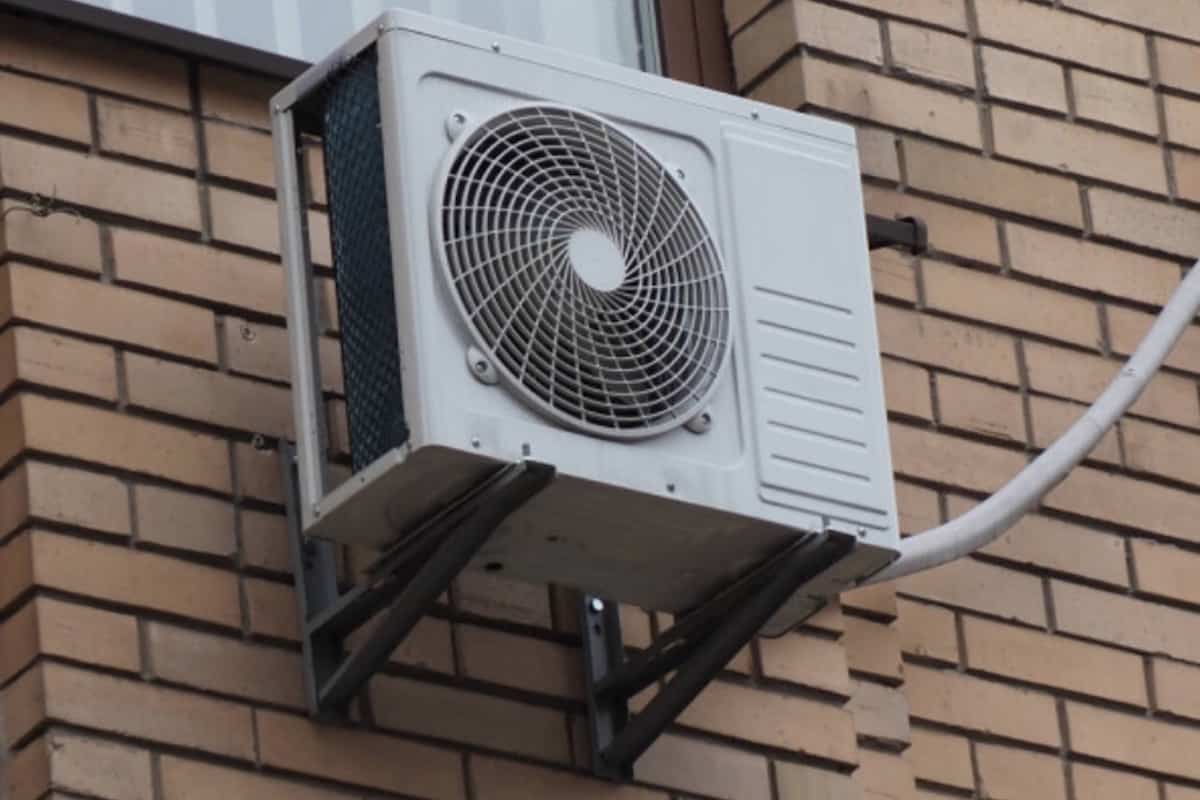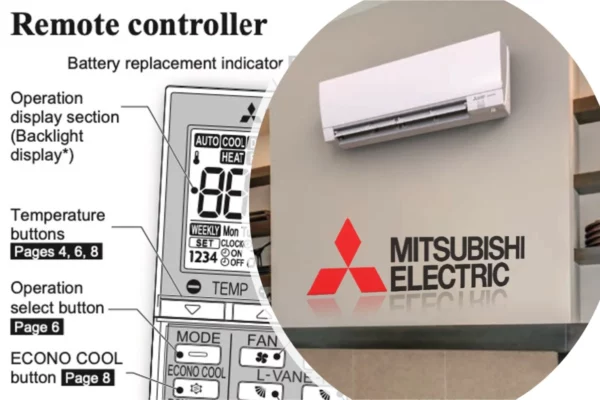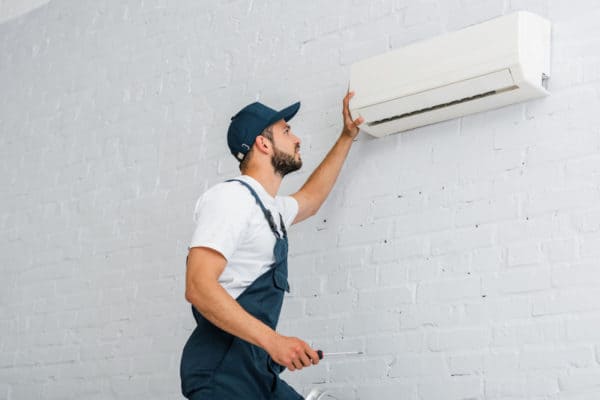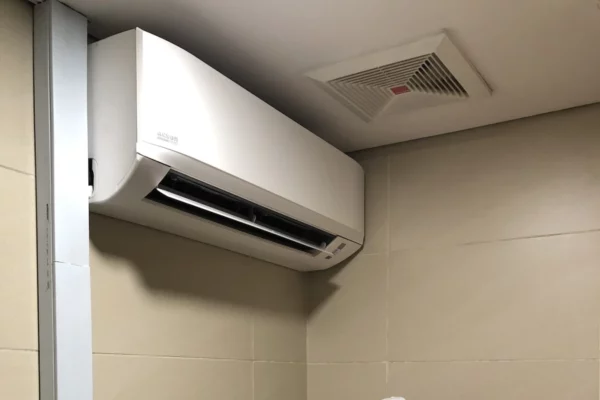Do Mini Splits Bring in Fresh Air from Outside?
Ventilate our house with outside fresh air is important especially in the winter. Though mini splits have an outdoor unit connected to an indoor unit, do mini splits bring in fresh air?
Most mini splits do not bring in fresh air. The mini split indoor and outdoor units are connected by refrigerant pipes that circulate a refrigerant. Thus, outside fresh air does not come through the outdoor unit of the mini split. However, certain types of mini split indoor units can attach a duct to bring in fresh air from outside.
Many people misunderstand that mini splits bring in fresh air through the outdoor unit because it’s connected to the indoor unit. However, it is not true.
How Mini Splits Work?
A mini split has an indoor and outdoor unit. What’s connecting between the indoor and outdoor unit are two items: a) refrigerant pipes, and b) cables.

The two refrigerant pipes are used to send a refrigerant back and forth to transfer heat from indoor to outdoor for cooling and from outdoor to indoor for heating.
Cables are for power supply as well as sending and receiving signals from the indoor unit.
When the heat inside a house is being transferred from the indoor unit to the outdoor unit, the outdoor unit fan must circulate the ambient air to dissipate the heat in order to have the capacity to absorb heat again.
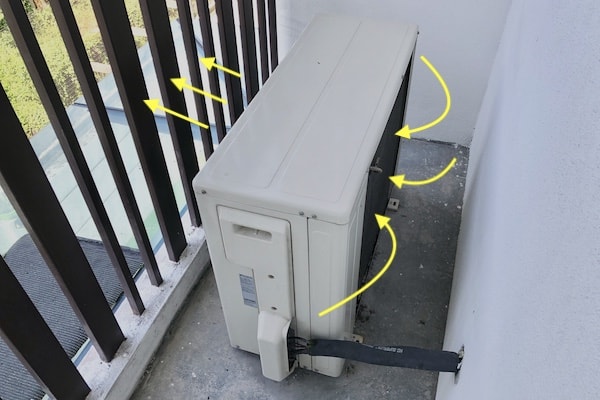
Thus, mini splits don’t bring in fresh air through the outdoor unit. The outside air merely circulates through the outdoor unit coil for heat transfer purposes.
Mini split is a great heating and cooling system. However, there are many brands and models. So, I did some study to come out the 4 Best Mini Splits in 2023. I encourage you to check it out if you’re considering one now.
How to Get Fresh Air Out of a Mini Split?
Most mini splits sold today come with the wall-mounted type indoor unit. This type of indoor unit mostly do not have any sort of fresh air intake.
Use an Energy Recovery Ventilator
To get fresh air out of a wall-mounted type mini split, you’ll need to install a separate ventilator. You may use an energy recovery ventilator (click to view a sample unit) to condition the fresh air before supplying it into your house.
It is critical that you don’t bring in warm outside air with high humidity because it’ll put stress on your mini splits, causing high power consumption.
An energy recovery ventilator (ERV) is able to reduce the temperature and humidity of the outside air so that your mini splits don’t need to use more power to condition the new air.
However, a typical ERV may cost around $1,000. Instead, you can use the ceiling cassette type indoor unit that has a fresh air intake.
Use a Ceiling Cassette Indoor Unit
A ceiling cassette mini split has a fresh air intake opening that you can pop open to connect a duct to bring in fresh air into the mini split. Then, the mini split will condition the fresh air properly before supplying it into your house.
Most ceiling cassette mini splits are tuned to bring in fresh air at about 10% of the supply air. For a single-family home, the ceiling cassette mini split is best to be installed in the living room to supply the fresh air for the entire house.
For details on the installation of the fresh air duct on a ceiling cassette mini split, check out my post How to Ventilate a Room with Air Conditioner? where I included a tutorial with a list of materials needed to accomplish it.
Many people don’t realize that mini splits are not only just ductless, they can be ducted also. Ducted mini splits are using a type of indoor unit that is often called ceiling concealed.
Use a Ceiling Concealed Indoor Unit
A ceiling concealed mini split use ducts and grilles to distribute air. It is usually installed above the ceiling. However, it’s significantly smaller than the ducted central air conditioner most people are used to.
The ceiling concealed mini split has a return air plenum which a duct can be attached to bring in fresh air. Similar to the ceiling cassette mini split, the fresh air will go inside the ceiling concealed mini split first to get conditioned properly before supplying it into your house.
The difference between the ceiling concealed and the ceiling cassette mini split is that the fresh air is filtered in the ceiling concealed mini split but usually not filtered in the ceiling cassette mini split.
Hence, a separate filter may be required at the fresh air intake grille if you are bringing in fresh air using the ceiling cassette mini split.
The fresh air duct for both the ceiling concealed and the ceiling cassette mini split should stay as short as possible with as few bends as possible.
It is recommended to install a damper to regulate how much fresh air is being brought in because too much fresh air may cause problems such as not enough cold and high humidity (mold, fungus, etc).
How Much Fresh Air Do We Actually Need?
According to ASHRAE standard, we should have at least 15 cubic feet per minute (cfm) of fresh air per person. Hence, if you have two people in the living room, you should have 30 cfm of fresh air supply in the living room.
For a typical 12,000 BTU ceiling cassette mini split, its supply airflow at medium fan speed is about 350 cfm. A 10% fresh air is equivalent to 35 cfm. Thus, it gives a good fresh air for two persons.
Since either the ceiling concealed or the ceiling cassette mini split is more expensive than the typical wall-mounted mini split, you may want to consider installing an ERV to bring more fresh air into your house.
What Happen If You Bring in Fresh Air Without Conditioning It?
It is not recommended to install a pure ventilation fan to draw in fresh air without conditioning it. The outside air is very humid and bringing in the high humidity outside air may raise the indoor humidity level.
High indoor humidity level is the root cause of long-term mold and fungus growth. Thus, the outside air must always be conditioned by an air conditioner or an energy recovery unit before supplying it into your house.
Although you may use a separate dehumidifier to bring down the humidity level in your house, you can’t prevent the humid air from contacting with some of the things in your house which will eventually cause mold and fungus to start growing on those things.
Should You Bring in Fresh Air?
If you are living in a cold place where you need to seal tight your house to protect you and your family from the cold weather, you should bring in sufficient fresh air to stay healthy.
However, if you can open your windows once every day, you may not need to bring in fresh air using your HVAC system.
Nevertheless, if you feel nausea, dizziness, headache, fatigue or difficult to concentrate, try going outside and get some fresh air. If doing so reduces your symptoms, consider using your HVAC system to bring fresh air into your house.
Lastly, consider my Mini Split (eBook) if you want to know how can you use Mini Split in your house. If you still have doubt or not feeling confident enough, feel free to consult me.
Consultation Service
Ask me for HVAC advice such as brand selection, best model, benefits, features, placement, duct size, grille size, how to design, design check, verification and other HVAC related queries.
If you have anything to add (or ask) about this topic, leave a comment down below!


